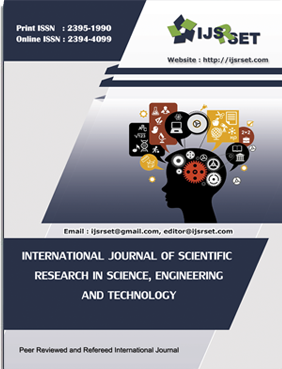Survey on Principal Component Analysis
Keywords:
Correlation Structure, Multivariate Technique, Covariance Structure, Orthogonal Transformation, Principal ComponentAbstract
Large amounts of data are increasing and often difficult to interpret. Principal Component Analysis (PCA) is a technique that reduces the residuals of these data, improving interpretation while reducing data loss. It does this by creating new random variables to keep making a difference. Finding these new variables (keypoints) can be reduced to solving the eigenvalue/eigenvector problem, and the new variables are defined by the data set at hand rather than the values, thus making PCA a modified data analysis technique. In another sense, it is flexible because the technology change is made for different types of products and models. This article will first introduce the basic concept of PCA and discuss what it can and cannot do. Some types and applications of PCA will be described.
📊 Article Downloads
References
S. Ning-min and L. Jing, “A Literature Survey on High-Dimensional Sparse Principal Component Analysis,” International Journal of Database Theory and Application, vol. 8, no. 6, pp. 57–74, Dec. 2015, doi: 10.14257/ijdta.2015.8.6.06.
Shang, H.L. A survey of functional principal component analysis. AStA Adv Stat Anal 98, 121–142 (2014). https://doi.org/10.1007/s10182-013-0213-1
G. O. Young, “Synthetic structure of industrial plastics (Book style with paper title and editor),” in Plastics, 2nd ed. vol. 3, J. Peters, Ed. New York: McGraw-Hill, 1964, pp. 15–64.
W. K. Chen, Linear Networks and Systems (Book style). Belmont, CA: Wadsworth, 1993, pp. 123–135.
Parul, Ms., M.Jain and Prof. V.K.Shandliya. “A survey paper on comparative study between Principal Component Analysis (PCA) and Exploratory Factor Analysis (EFA).” International Journal of Managment, IT and Engineering 3 (2013): 415-424.
Chao Y-S, Wu H-C, Wu C-J and Chen W-C (2018) Principal Component Approximation and Interpretation in Health Survey and Biobank Data. Front. Digit. Humanit. 5:11. doi: 10.3389/fdigh.2018.00011
Jolliffe Ian T. and Cadima Jorge 2016Principal component analysis: a review and recent developmentsPhil. Trans. R. Soc. A.37420150202 http://doi.org/10.1098/rsta.2015.0202
S. Sehgal, H. Singh, M. Agarwal, V. Bhasker and Shantanu, "Data analysis using principal component analysis," 2014 International Conference on Medical Imaging, m-Health and Emerging Communication Systems (MedCom), Greater Noida, India, 2014, pp. 45-48, doi: 10.1109/MedCom.2014.7005973.
Saha, Sumanta, and Sharmistha Bhattacharya. "A Survey: Principal Component Analysis (PCA)." International Jounal of Advance Research in Science and Engineering 6.6 (2017): 1-9.
Alim Samat, Paolo Gamba,Fellow, Sicong Liu,, “Jointly Informative and Manifold Structure Representative Sampling Based Active Learning for Remote Sensing Image Classification,” IEEE Journals, 2017.
Svante Wold, Kim Esbensen, Paul Geladi,Principal component analysis,Chemometrics and Intelligent Laboratory Systems,Volume 2, Issues 1–3,1987,Pages 37-52, ISSN 0169-7439, https://doi.org/10.1016/0169-7439(87)80084-9.
Downloads
Published
Issue
Section
License
Copyright (c) 2024 International Journal of Scientific Research in Science, Engineering and Technology

This work is licensed under a Creative Commons Attribution 4.0 International License.




